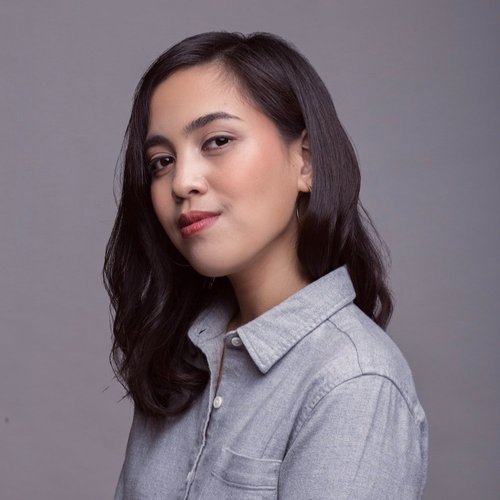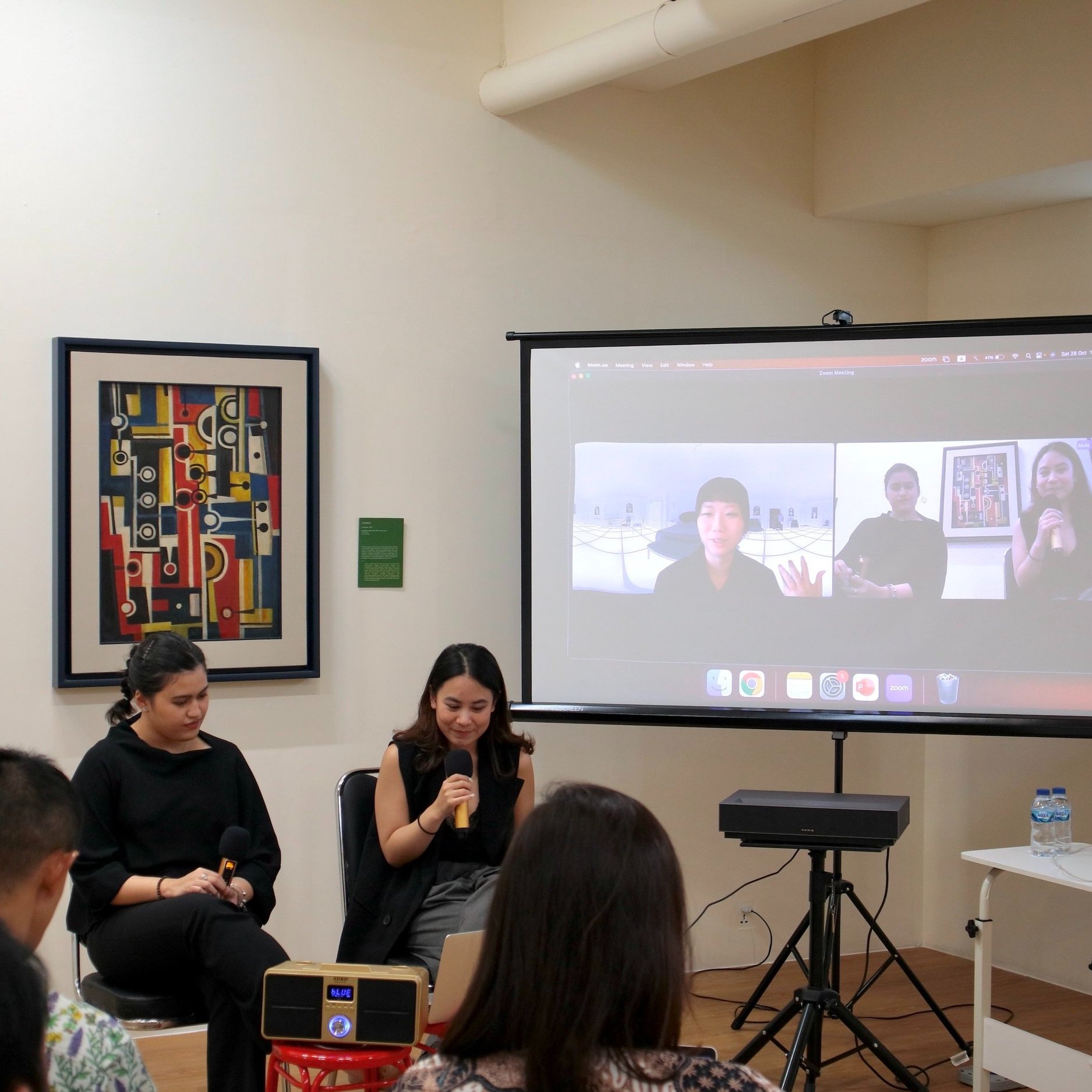My Own Words: ‘Fragmenting Yesterday, Reshaping Tomorrow’
Co-curating Indonesian Contemporary Art and Design (ICAD) 12
By Amanda Ariawan
'My Own Words' is a monthly series which features personal essays by practitioners in the Southeast Asian art community. They deliberate on their locality's present circumstances, articulating observations and challenges in their respective roles.
Muhammad Fadli x Fatris MF x Jordan Marzuki, ‘The Banda Journal’ (Detail), 2021, mixed media, dimensions variable. Image courtesy of ICAD.
Through this essay, I hope to reflect on several axes that shaped ‘Fragmenting Yesterday, Reshaping Tomorrow’, the twelfth edition of the annual Indonesian Contemporary Art and Design (ICAD). The showcase highlighted artworks by 59 artists, designers, architects, creative technologists, and sound artists over two floors. ICAD started in 2009 as an initiative by a group of architects and designers, aiming to blur the lines between art and design using exhibition as a medium. Each year, the exhibition takes place at Grandkemang Hotel, one of the first hotels in South Jakarta. The event is supported by both government and private institutions, and works together with several local and international partners, ranging from cultural institutions, associations, communities, and media.
When I was first invited in April 2022 to be one of two young curators for this year’s edition of the festival, Diana Nazir and Itjuk Rahayu, the Artistic Directors, and the ICAD committee already had a preliminary concept in mind. They wanted to raise the idea of “reconstruction”, a recurring concern in various sectors, from economy and politics to arts and culture, towards the end of the pandemic. The drive to start anew, evolve, fix, and change things for the better felt very present and timely to discuss. Their questions were: how can we look at it from a critical standpoint? What approach should we take in order not to merely move forward without thinking? What points of reflection may we refer to?
Responding to that brief, my co-curator Prananda L. Malasan and I decided to think about the relationship between our past and future. Certainly, the pandemic has affected our collective memory. The past three years have allowed deeper reflections regarding various events that have occurred, and how our world will take shape in the upcoming years. During the curatorial process, Prananda and I were able to take a peek of, and later fathom the participants’ critical reflections and imaginations on the theme. The participants’ views ranged from humorous to political, analytical to speculative, and contributed to a spectrum of discourses related to environment, history, technology, and civilisation.
Tactogram, ‘Universal Tactile Pictogram Design for the Visually Impaired in Public Spaces’, 2022, mixed media. Image courtesy of ICAD.
Firstly, inclusivity was a subject pushed forward by some of the participants. Entering the exhibition, we are greeted by Tactogram, an improved guiding block to support universal accessibility for the visually impaired. Through an open studio, Tab Space also collaborated with young artists and illustrators with disabilities to create stationeries and wearables.
Heri Dono and M.S. Alwi’s artworks, ‘Fragmenting Yesterday, Reshaping Tomorrow’, 2022, presented as part of ICAD 12, exhibition view. Image courtesy of ICAD.
Some of the artists chose to challenge creation with the concept of play. Heri Dono tinkered with old electronic parts, fusing them with philosophically strong iconographies and messages. Two of his kinetic sculpture series responded to the hotel’s lobby. One was suspended and another installed on the carpet, bringing sound, movement, and visual into the space. We had a memorable experience during our studio visit to Studio Kalahan, Heri Dono’s work space and “playground” in Yogyakarta. He recounted his habit of visiting flea markets in search of old electronic devices to dismantle and re-assemble into parts of his artworks. He explained that extending the life of old machines brings him joy and makes him understand more deeply his role as an artist, which is to reconstruct.
Still in the realm of play, Izat Arif wittily responded to the idea of “bad” aesthetic through a work made of linoleum mat. The affordable plastic can be found in many "ordinary" Malaysian homes and hawker stalls, functioning as a table top cover or a floor mat. Izat playfully used this material to create composition which echoes the typical graphics of government-issued banners.
Trianzani Sulshi, ‘Bio - Tensed’, 2022, rattan, hemp ropes, mycelium, dimensions variable. Image courtesy of ICAD.
Many delved into the concept of “making” beyond function and aesthetic, by considering the ethical and cultural values of materials and how the process could be sustainable. Both designer Trianzani Sulshi and design collective PLAYO responded to specific sites of the hotel. They used alternative materials to reveal concerns about accessibility. Sulshi focused on the topic of tension through an installation combining bamboo, mycelium, and rope, while PLAYO mapped out sustainable materials across Indonesia, and used them to transform one of the existing hotel rooms into a sustainable bedroom. The curatorial process for both works involved intensive discussions with the hotel management, and that made it clear to me that making art present in public spaces is not an easy matter. Communication and education are certainly important to create room for art in our society.
Krishnamurti Suparka, ‘The Hotel’, 2022, mixed media, dimensions variable. Image courtesy of ICAD.
Nasirun explaining his work during a studio visit by the ICAD curatorial team, 2022. Image Courtesy of ICAD.
Remembering served as an approach for many of the participants. Looking back into personal or collective memories can offer us alternative ways of perceiving history, old values, traditions, or trends, as well as our proximity with them.
“Remembering served as an approach for many of the participants. Looking back into personal or collective memories can offer us alternative ways of perceiving history, old values, traditions, or trends, as well as our proximity with them. ”
Krishnamurti Suparka classified various images and objects representing fragments of history over the course of the hotel’s 48 years of operation. The work is participative as the artist invited the hotel and festival staff to contribute images or objects that represent memories linked to the hotel. During the making process, I particularly appreciated being involved in object-finding. One of the hotel staff showed us areas in the hotel where they keep old objects that are no longer in use. Led by the artist, we identified objects that may store memories of the hotel’s past. What was most surprising was when we found two old maquettes of the hotel, with one showing what the hotel looked like in the 1970s! The two maquettes, as well as several found objects, ended up being part of the installation.
Nasirun is another artist who adopted remembering as an artistic approach. He was inspired by his hobby of collecting old art pieces and objects. Combining his role as an artist and collector, he responded to the materiality of old stamps, invitation cards and old-school notebook pages that he collected, using the techniques of carving, painting, and drawing to transform them into contemporary artworks.
Public participation is an aspect embedded into some of the works. The artists saw this as an attempt to find possibilities in the process of creation. As an example, Arafura Media Design tackled the idea of isolation and connection during the pandemic in this digital era, through visuals generated based on data sets collected from the general public. Meanwhile, Eddie Hara and REBELLIONIK collaborated on a mobile installation based on the hotel’s luggage trolley. Hotel staff and the wider public are invited to use them and in doing so, complete the work.
Titarubi, ‘History is written by the victors’ (back), 2022, charcoal on canvas, wood, 400 x 200cm. Titarubi, ‘Bahtera Gajah Mina’ (front), 2022, wood, rope, variable dimensions. Image courtesy of ICAD.
Combining fact and fiction, a few of the works offered speculative visions on the conditions of tomorrow, or how certain things could have taken place. Titarubi continued her journey of tracing facts related to the history of spice trade and maritime trade in Indonesia. She presented a speculative ship design based on a relief in Borobudur and a local folktale ‘Gajah Mina’.
BaNa x TAGA & Baséput, ‘Harapan’, 2022, bamboo, wood, audio, dimensions variable. Image courtesy of ICAD
The multidisciplinary works presented transported us to different temporalities and unveiled diverse perspectives. They help us witness how far we have come in our continuous process of struggle and transformation. After experiencing the collaborative aspect of curating ICAD12 and the positive responses from visitors, I am even more optimistic about the exhibition as an artistic instrument that binds creation, knowledge, criticism, and people.
The views and opinions expressed in this article are the author's own and do not necessarily reflect those of Art & Market.
Some of the points raised in the essay are a result of the writer’s discussion with the exhibition’s Guest Curator Prananda L. Malasan.
‘Fragmenting Yesterday, Reshaping Tomorrow’ was on view from 19 October to 27 November 2022, at Grandkemang Hotel, Jakarta.
Read all My Own Words essays here.
About the Writer
Amanda Ariawan, (B. 1993) is a young curator and art writer. She obtained her MA in Contemporary Art Exhibition Production from Université de Lille 3, France. Her research examined the local, global, and identity issues within Asian contemporary art exhibitions in France. Amanda has worked on several curatorial, art management, and public art projects in Europe and Southeast Asia. Through her exhibitions, she hopes to amplify the voices of Southeast Asian artists, as well as those of women artists.






















